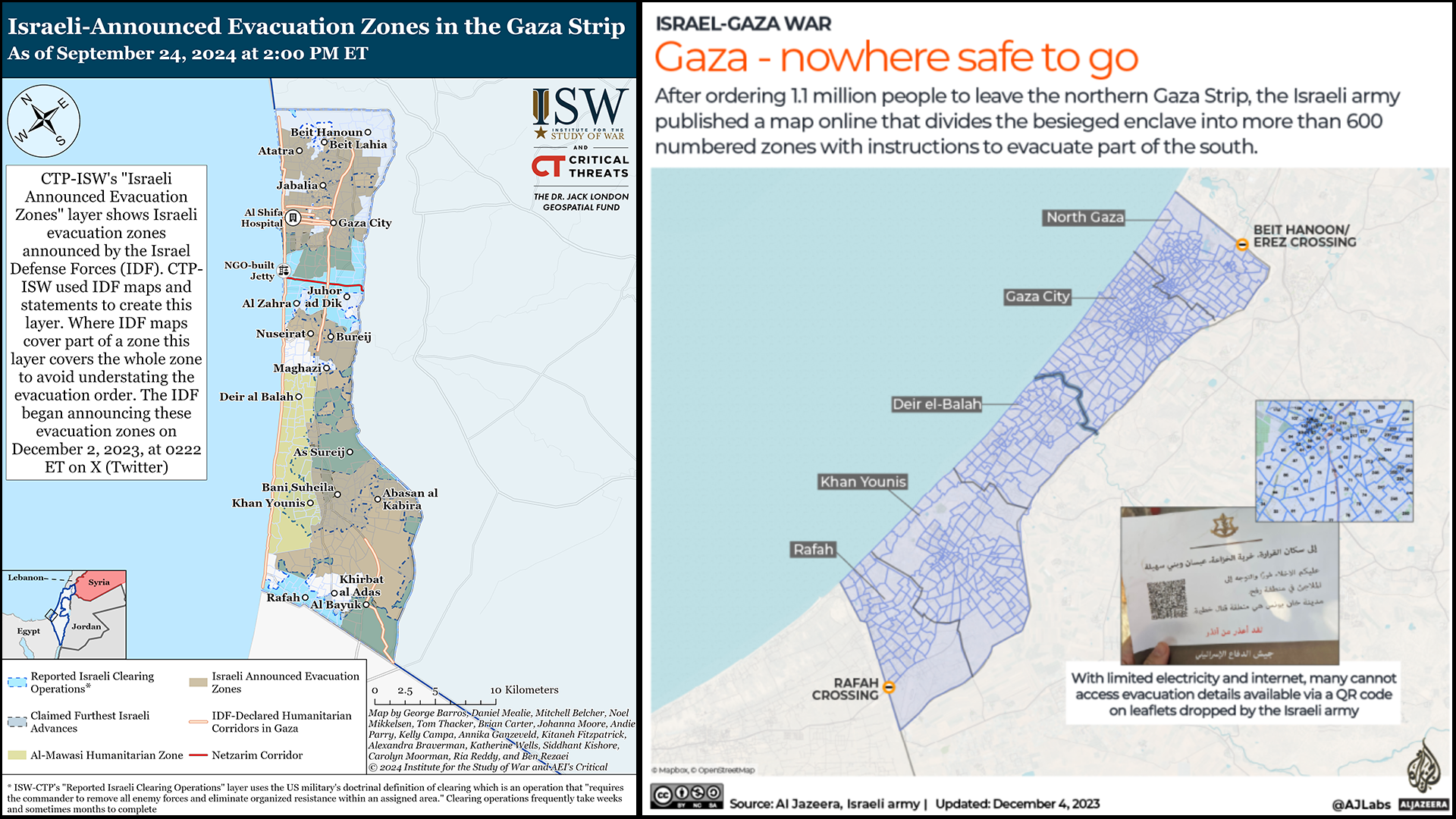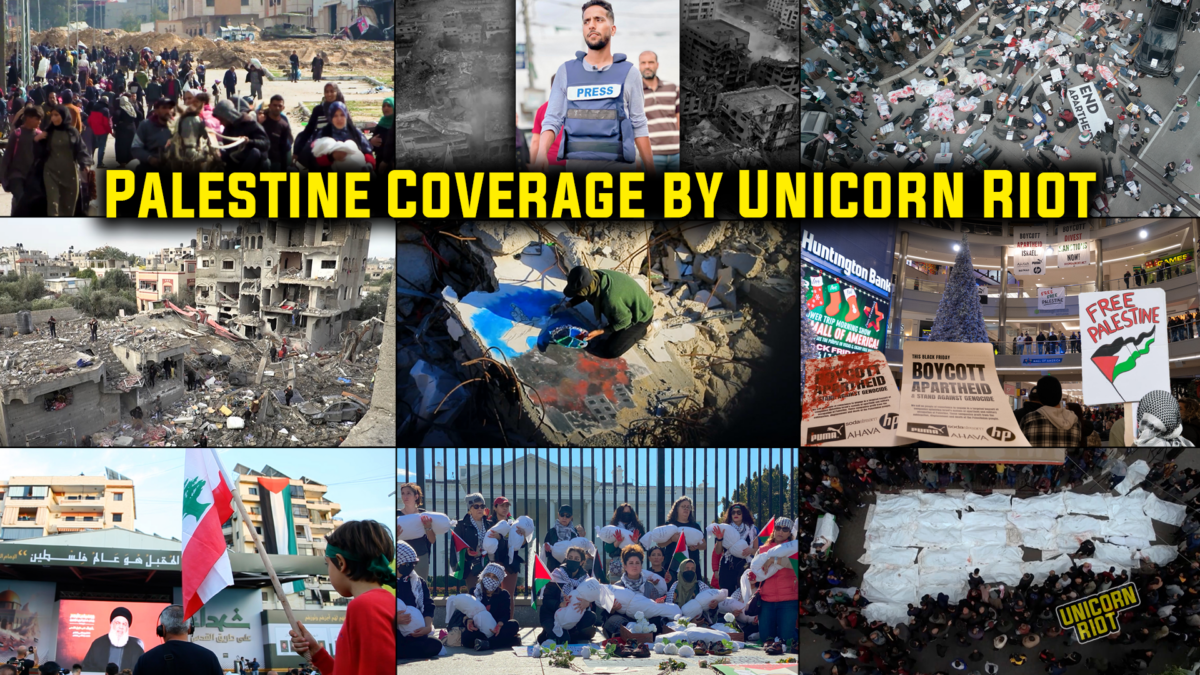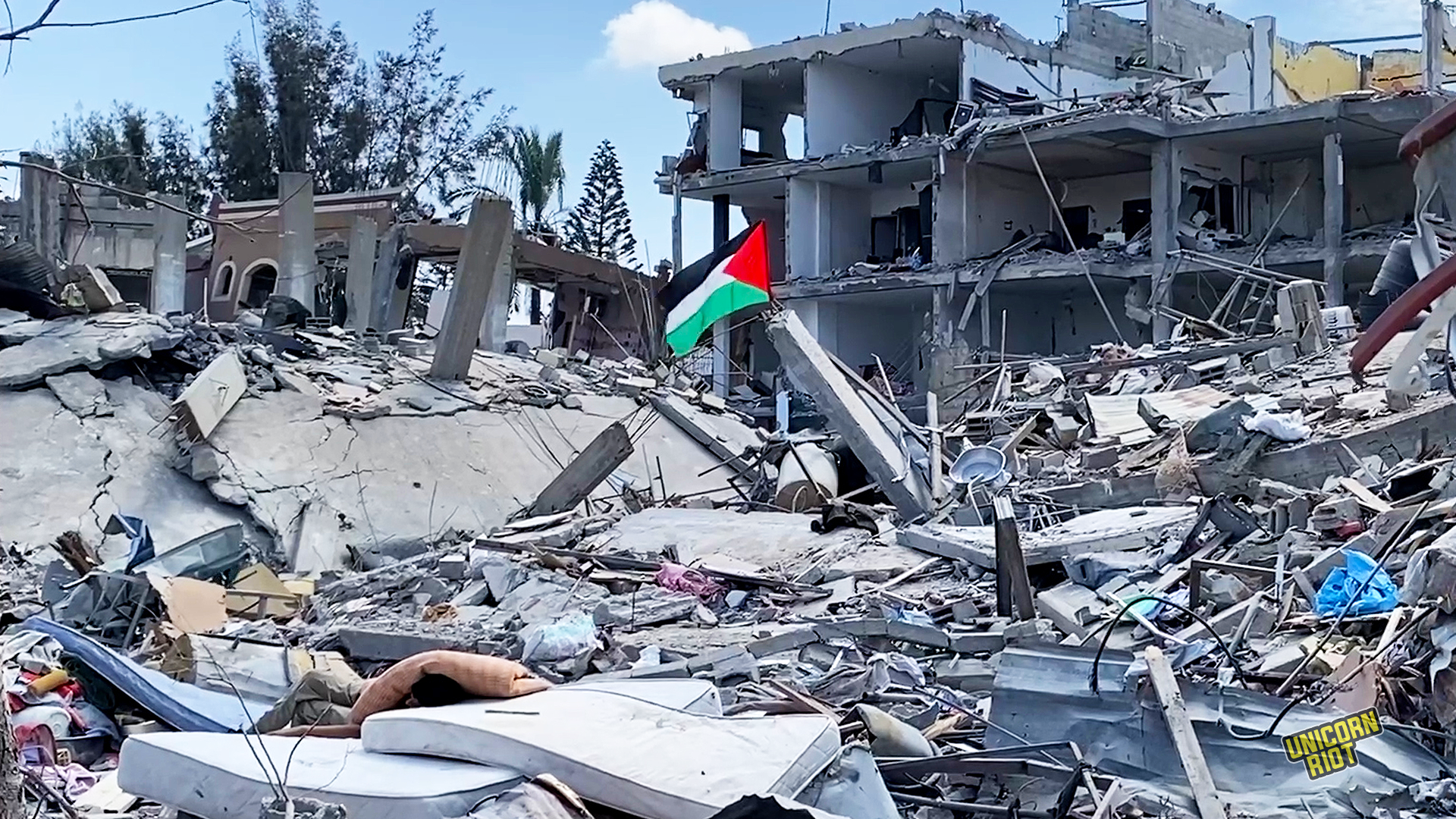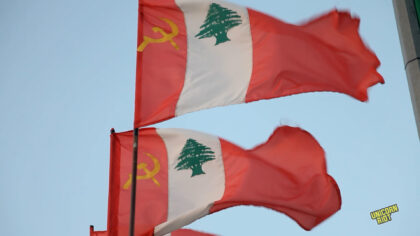Palestinians Face Forced Displacement, Death and Disease in Gaza
Gaza Strip, Palestine — With the war on Gaza being dubbed the first livestreamed genocide, gruesome images of Palestinian bodies shredded by Israeli bombings circulate the internet daily. More than 52,000 Palestinians have been confirmed killed, including those still buried under the rubble, with the actual death count likely as high as 186,000 or more. A third of those killed by Israel are children and around 100,000 Gazans have been injured. Of the 2.2 million Palestinians in the 25-mile long coastal enclave, 2 million have been forcibly displaced at least once since in the last year.
As international courts warn of a genocide against Palestinians and human rights groups call Israeli military actions in Gaza “war crimes of wanton destruction,” Israeli forces have destroyed over 87% of the housing units and school buildings, and more than 80% of the urban infrastructure while more than 70% of Gazan roads in Gaza are damaged or destroyed.
Igniting this destruction is approximately 85,000 tons of explosives that have been used on Gaza — more than what was dropped on Hiroshima, Nagasaki, Dresden, Hamburg and Tokyo combined in World War II. 69% of Israel’s arm imports come from the United States and 28% is supplied by Germany.
Unicorn Riot contributor Mohamed El Saife has been on the ground covering the realities of war and interviewing a wide range of Palestinians directly impacted — a risky feat as Israel has killed at least 173 journalists, according to the Government Media Office in Gaza.
As protests on college campuses in the U.S. start to escalate again, pressing for universities to divest from Israel and companies that work with it, we look at some recent video reports from the last several months illustrating stories of displacement, destruction, and death.
Displacement and Disease
Within a week after the Hamas-led attacks on Israel on Oct. 7, 2023, Israeli military issued “evacuation orders“ to 1.1 million Palestinians living in the northern part of the Gaza Strip. Israeli jets dropped leaflets telling Gazans to go to the al-Mawasi “safe zone” which stretches from Deir Al-Balah to Khan Younis. By the end of 2023, Israel issued evacuation maps with color-coded regions and forcibly displaced 1.9 million Palestinians within Gaza. Hundreds of thousands more have been displaced in 2024.
Gaza is split into five governorates, from north to south: North Gaza, Gaza City, Deir Al-Balah, Khan Younis and Rafah. In the beginning of the war, as with past incursions into Gaza, Israel split the Strip at the Netzarim Corridor – which divides Gaza City from Deir Al-Balah – and forced residents south. (Netzarim was used as a line of control when Israel maintained settlement colonies in the territory until 2005, and continues to be used for this purpose with fortified installations.)

Recently, upwards of 400,000 Palestinians who had returned to North Gaza – particularly in the Jabalia refugee camp – have been under military siege for over 21 days and facing dire situations with thousands killed or detained in prison camps where torture and rape by Israeli guards are commonplace.
🔴 Day 21 of Israel Starving 400,000 Palestinians in Gaza
— Drop Site (@DropSiteNews) October 21, 2024
Head of UN agency: “Israeli authorities continue to deny humanitarian missions to reach the north with critical supplies including medicine and food for people under siege.”
Read the latest updates in this 🧵👇
Video:… https://t.co/lxjc65m474 pic.twitter.com/rDXCNKCZLA
As masses are displaced, infrastructure and aid have been decimated by Israeli bombings and policies of weaponizing hunger. This has led to death by starvation, disease and the return of polio after being eradicated 25 years ago. A second round of polio vaccinations occurred last week, see our recently published video report here.
This summer in Khan Younis, as Unicorn Riot was on the ground hearing from displaced residents, Umm Ahmed Al Hana spoke to us on camera about some of the suffering she faced from the displacement.
Living in a tent just feet away from massive garbage piles, Al Hana said, “We have become ill. We are sick and we are suffocating. We force ourselves to eat. We have lost our appetite. The smell is bad. The flies, the sewers, the rats. They all come to us.”
‘No Place in Gaza is Safe’
As Israeli forces have decimated large sections of Gaza over the last year, residents have continued to tell Unicorn Riot that they feel that no place in the Strip is safe.
Sometimes residents are warned of Israeli bombardments ahead of time and are able to escape. In July 2024, Unicorn Riot was on the ground in the Nuseirat refugee camp filming such an instance. Israeli officials used a Palestinian near a residential tower to tell other Palestinians to leave the area because of an imminent strike.
Israeli jets targeted the building with two airstrikes that damaged the top floors and surrounding buildings as flying concrete debris and missile fragments sprayed across the area. We heard from Adly Awad after the strikes. Awad was on the phone with Israeli intelligence officers who used him to tell others to evacuate the area before the bombing.
“The intention of the intelligence call, as they claim, is not to harm people,” Awad said. He said Palestinians “have been left alone” by the international community and are now “used to” the “great harm caused by the Israeli occupation airstrikes …[and]… massacres committed against children, women, the elderly, and youth on a daily basis.”
Civilians fleeing for their lives attempt to find safety in Israeli declared safe zones, hospitals, United Nations-run shelters and tent camps. However, Israel has been repeatedly and systematically bombing these safe zones, shelters and camps, claiming that they’re actually targeting Hamas operatives.
Surviving an Israeli attack on a shelter run by the United Nations Relief and Works Agency for Palestine Refugees (UNWRA) in May 2024, Fidaa Mohammadin, told Unicorn Riot that she saw people “melted” and “charred” from the flames. She said was displaced from the north before she found herself in the midst of the attack on the Nuseirat refugee camp where eight people died.
At least 300 humanitarian aid workers, at least 214 UN staff members, and over 1,151 healthcare professionals have been killed by Israel in Gaza over the last year.
Two weeks ago on Oct. 10, another UN-run school was attacked by Israeli forces, at least 28 Palestinians were killed and 54 people were injured by an Israeli strike on the school housing displaced Palestinians in Deir Al-Balah. The Israeli Army did not warn the shelter before the attack.
#GAZA: At least 28 Palestinians were killed and 54 people were injured by an Israeli strike on a school housing displaced Palestinians in Deir Al-Balah today.
— UNICORN RIOT (@UR_Ninja) October 10, 2024
The Israeli Army did not warn the shelter before the attack.
For more from Palestine: https://t.co/9AN5wutQEU pic.twitter.com/E1fxvEuKU4
Since May 2024, at least five direct attacks by the Israeli military on the al-Mawasi “safe zone” in Gaza have killed at least 217 displaced Palestinian civilians.
Unicorn Riot was on the ground on Sept. 10 after a night of Israeli missile attacks on al-Mawasi that killed 40 Palestinians and wounded over 60.
After the strikes, displaced Palestinian Ahmed Mahna told Unicorn Riot that he survived the bombing despite being “buried in the sand” after his “tent collapsed.” Mahna was saved by other displaced Palestinians digging into the sand.
He echoed the statement, “There is no safe place in Gaza.”
The airstrikes left massive craters in the earth. Standing next to the crater, Muhammad Abdul Hanna said there “was no resistance fighters” there and that all of the victims were “children and women.” He said they were directed to that exact area by the Israeli authorities and were then targeted for bombing as they slept.
“What crime have we committed? We are all displaced in safe areas announced by the Israeli occupation forces. They directed us to this area. We did not choose it ourselves. They ordered us to go to al-Mawasi, and we went to al-Mawasi [safe zone]. We were sleeping. We have no connection to any resistance party. What is the fault of the innocent women and children? All who were killed were children and women. They are all children and women; none of them are armed fighters.”
Muhammad Abdul Hanna
** More Unicorn Riot coverage from Gaza and Palestine **
Destruction
Like the majority of those displaced, Abu Abdullah Al-Farra returned to Khan Younis during the summer of 2024 to find his home destroyed by Israeli airstrikes, along with his neighborhood.
Al-Farra spoke to Unicorn Riot as he built a shelter on top of his destroyed house, “We came home and there’s nothing left of my house… We’re just managing to protect ourselves with whatever we can.” (Relatedly, from Khan Younis in April 2024, Unicorn Riot heard from Ahmed Abu Daqqa as he made a DIY shelter in front of his destroyed home.)
When Israeli forces withdrew from Khan Younis after a three-week operation in late August 2024, they left trails of destruction and large craters from blowing up tunnel infrastructure. Israel faced heavy resistance and claims it killed 250 Palestinian fighters before pulling its forces out. (Palestinians and their supporters generally consider militants to be resistance fighters while pro-Israeli sources almost always describe them as terrorists even when in combat with IDF military units.)
In late August, Unicorn Riot documented civilian victims of Israeli bombings being brought to the hospital and others returning home to Khan Younis from other parts of the Gaza Strip, see the video below.
Around the same time in late summer and seven miles northeast of Khan Younis, Israeli forces withdrew from Deir Al-Balah. Palestinians similarly returned to find their homes and neighborhoods destroyed.
Unicorn Riot heard from Gazans directly impacted. Mohammed Naser Al-Loah spoke of despair. Al-Loah said he lost his mom, dad, and nephew and 800 members of his extended family to Israeli violence. He said “no one cares” for the Palestinians.
“All Arabic people say, ‘We are with you.’ But their speech is in vain. Your marches are fruitless. None is caring for us. Your marches will never come up with positive results. We are dying, we are being killed.”
Mohammed Naser Al-Loah
Standing on rubble and holding a recovered stuffed animal, Abdul Wahab Qwaider told Unicorn Riot that he was getting ready to retire next year after 29 years of working and he recently had returned to Deir Al-Balah to find his home destroyed. “I will retire while my house is completely ruined.”
“The people all over the world are watching while we are being tortured,” said Qwaider. He felt that Palestinians were being forced to emigrate from Gaza and that the international world, including Arab nations were allowing it to happen and even “conspiring with the Israelis to let them destroy our houses.”
“Frankly speaking, we want to know: ‘Our Islamic nations, are you conspiring with the Israelis to let them destroy our houses?’ Aren’t you conspiring with them to let them transfer and emigrate us out of Palestine?”
Abdul Wahab Qwaider
Assassinations, Death, and Detention
While the death toll of Palestinians exceeds 52,600, the official death toll of Israelis killed in the October 7 attacks stands at 1,139 with 8,730 injured. Israeli authorities report that the bodies of 35 dead Israeli hostages taken on Oct. 7, 2023 and brought into Gaza are still unaccounted for and there are around 60 Israeli hostages alive in Gaza.
In response to the attacks, Israel has arbitrarily arrested at least 10,700 Palestinians in the occupied West Bank along with an unreported number likely in the tens of thousands detained from inside Gaza. Palestinians have been seen stripped to their underwear, hands tied and fabric over their eyes being loaded onto the back of Israeli military trucks. In violation of international human rights standards, the detainees face a myriad of physical and psychological acts of torture by Israeli forces including rape, waterboarding, electric shock, sleep deprivation and beatings.
Before the war on Gaza, torture in Israeli prisons was as commonplace as administrative detention, the practice of holding prisoners without charge or release dates and no contact with the outside world. At least 235 Palestinian prisoners had died in Israeli prisons from 1967 to 2023. After the events of Oct. 7, Israel created what human rights group Israeli human rights NGO B’Tselem calls a network of torture camps at its prisons within the country. At least 60 Palestinians have died in custody in the past year.
Negotiations to reach a ceasefire and free Israeli hostages have barely sputtered along since Israel killed Hamas leader Ismail Haniyeh in Iran in July. Reports indicate many weeks go by without substantial progress.
Hezbollah opened up a war front in northern Israel after Oct. 7, 2023, causing between 60,000 to 80,000 Israelis to be evacuated. Lebanese civilians have also been displaced en masse from the south of their own country – see our report Gaza War Spillover: Lebanon’s Silent Displacement Crisis. Hezbollah’s position has been that their operations in this conflict would continue until Israel reached a ceasefire with Palestinian groups based in Gaza.
For most of the last year, Hezbollah and the Israeli forces have exchanged fire, with both sides bombarding civilian villages and tactical sites (although contrary to impressions in U.S. media coverage, IDF strikes vastly outnumbered Hezbollah strikes five to one). Israel then committed to a larger military campaign in September and demanded evacuations of dozens of towns and villages in Lebanon. Similar to its policy during the occupation of south Lebanon, Israel expanded its assassinations program to hit Hezbollah leaders, including Sheikh Nasrallah in a massive airstrike that demolished multiple apartment buildings. Israeli ground forces then once again invaded south Lebanon, for the first time since 2006.
At least 2,546 people in Lebanon have been killed since Oct. 7, 2023 and 11,862 injured. After the assassination of Nasrallah, Unicorn Riot heard from two Gazans in Khan Younis about their opinions on the killing. One said, “this reflects the state of bankruptcy of the occupier; assassination does not solve the problem but complicates it further.”
A few days later on Oct. 1, 2024, Iran initiated what it called ‘Operation True Promise 2’ and fired around 200 missiles at Israel.
Unicorn Riot was on the ground in Gaza when the missiles crossed over the sky. Some Palestinian residents cheered as they watched part of a missile volley.
On the same day, October 1, in Khan Younis, Israel continued its bombings. UR was on the scene to film the aftermath of a bombed civilian vehicle. The charred remains of three people were pulled out after bystanders attempted to put out a fire on the car following the attack.
Similarly arriving at the scene of a bombing in Khan Younis, the following video from July provides a powerful glimpse at the aftermath of an Israeli drone attack on a residence near a UN-run school sheltering the displaced.
A survivor of the attack spoke to Unicorn Riot. She said she was lucky to be alive. She with her sisters and their children and “didn’t hear anything, nor any sound of planes,” before the attack.
On July 15, back in the Nuseirat refugee camp, UR was on the scene of an Israeli airstrike that killed at least 11 Palestinians, including five children — watch on Vimeo and YouTube.
Despite the death and destruction, many Palestinians remain resilient. Unicorn Riot recently published a report about a displaced Palestinian girls’ boxing club. Palestinian artists have also turned rubble to a canvas, painting murals on destroyed homes in Gaza. See our special Palestinian Paints Murals on Rubble Amid War on Gaza, and from before the war on Gaza started, Bombed Houses in Gaza Transformed by Palestinian Calligraphy Artist.
As the war on Gaza continues and the negative impacts reverberate, Unicorn Riot’s contributor Mohamed El Saife has been continually displaced with his family. Donate directly to Mohamed here and to Unicorn Riot to continue our on-the-ground reporting.
Stay tuned for more upcoming reporting from the frontlines in Palestine.
For more from Palestine, click on image below.

Israeli Rescue Operation Massacres Hundreds of Palestinians, Top Military and Political Leaders Resign – June 2024
Ongoing War Crimes: Israel Targets Journalists, Aid Workers, Civilians in Gaza – April 13, 2024
Follow us on X (aka Twitter), Facebook, YouTube, Vimeo, Instagram, Mastodon, Threads, BlueSky and Patreon.
Please consider a tax-deductible donation to help sustain our horizontally-organized, non-profit media organization:



